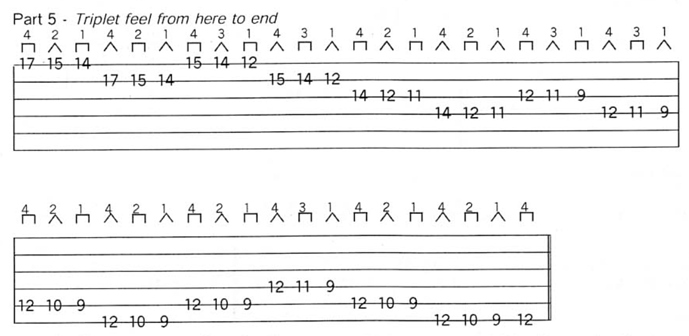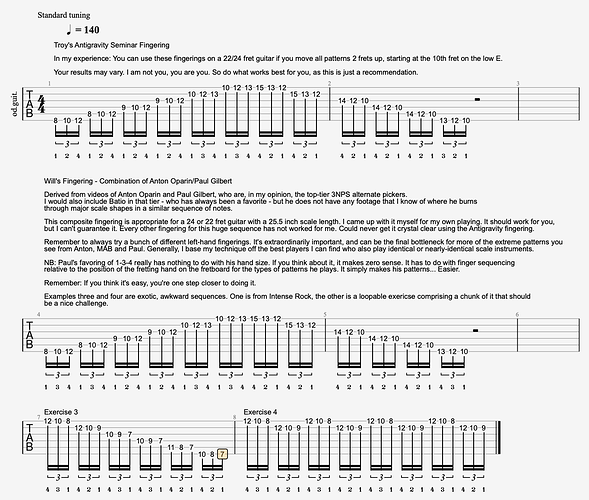I’m going to keep an ongoing log of my alternate picking progress. Open to criticism, comments, questions, concerns, suggestions on how to play with more emotion and feeling, etc.
Example 1: Atypical Harmonic Minor Run
Lately I have been working on odd left hand fingerings. I put the tab for this below, it’s a really cool lick. I’ve noticed with these types of left hand fingerings after about 2-3 days they start feeling about as normal as any other one-finger-per-fret sequence. The best thing about wider left hand fingerings - besides their unique sound - is that your options for different fingerings are essentially non-existent. Therefore, it’s less likely you’ll end up picking a sequence of fingerings that makes playing the lick either impossible or extremely difficult.
Example 2: In the style of Paul Gilbert
Starting off with inside picking and then transitoning into ascending and descending sixes. Fairly straightforward, would like to get this one a bit tighter tbh. In the last group or so of descending sixes I feel like I “decelerated” through the string. In other words, think of when you used to play baseball as a kid. The coach always told you to run through first base because he knew you’d likely slow down before reaching it. This is what I’m trying to avoid at high speeds at around 135-140 sextuplets here.
Example 3: In the style of MAB
My intonation was horribly fucked up in this clip due to the winter weather in NYC, but here’s exercise 5, part 5 from Speed Kills 1991, but modified with ascending sixes to work on transitioning from sixes to descending threes with what was I think (formerly) known as two-way pickslanting. I like to work on these techniques separately and then “glue” them together.
The signature descending-ascending portion of the final part of this lick is very odd and took some getting used to. It sounds like a malfunctioning computer.








